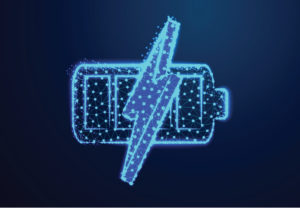Scientists working for QuantumScape claim to have found a breakthrough in lithium battery technology. WIRED reports:
IF ELECTRIC VEHICLES are ever going to fully supplant gas guzzlers on the world’s roads, they’re going to need an entirely new type of battery. Despite steady improvements over the past decade in the energy density and lifetimes of lithium-ion batteries, the cells in new EVs still lag behind internal combustion engines on pretty much every performance metric. Most EVs have a range of less than 300 miles, it takes more than an hour to recharge their battery packs, the cells lose nearly a third of their capacity within a decade, and they pose a serious safety risk because of their flammable materials.
The solution to these problems has been known for decades: It’s called a solid-state battery, and it’s based on a deceptively simple idea. Instead of a conventional liquid electrolyte—the stuff that ferries lithium ions between electrodes—it uses a solid eloctrolyte. Also, the battery’s negative terminal, called its anode, is made from pure lithium metal. This combination would send its energy density through the roof, enable ultra-fast charging, and would eliminate the risk of battery fires. But for the past 40 years, no one has been able to make a solid-state battery that delivers on this promise—until earlier this year, when a secretive startup called QuantumScape claimed to have solved the problem. Now it has the data to prove it.
On Tuesday, for the first time, QuantumScape’s cofounder and CEO, Jagdeep Singh, publicly revealed test results for the company’s solid-state battery. Singh says the battery resolved all of the core challenges that have plagued solid-state batteries in the past, such as incredibly short lifetimes and slow charging rate. According to QuantumScape’s data, its cell can charge to 80 percent of capacity in 15 minutes, it retains more than 80 percent of its capacity after 800 charging cycles, it’s noncombustible, and it has a volumetric energy density of more than 1,000 watt-hours per liter at the cell level, which is nearly double the energy density of top-shelf commercial lithium-ion cells.
“We think that we’re the first to solve solid-state,” Singh told WIRED ahead of the announcement. “No other solid-state systems come close to this.”
QuantumScape’s battery cell is about the size and thickness of a playing card. Its cathode, or positive terminal, is made of nickel manganese cobalt oxide, or NMC, a common chemistry in EV batteries today. Its negative electrode, or anode, is made from pure lithium metal—but it’s more accurate to say that it doesn’t have an anode at all, since it’s manufactured without one. When the battery discharges during use, all of the lithium flows from the anode to the cathode. The vacancy left on the anode side—thinner than a human hair—is temporarily compressed like an accordion. The process reverses when the battery is charged, and the lithium ions flood into the anode space again.
“This anode-free design is important because it’s probably the only way that lithium-metal batteries can be manufactured today with current manufacturing facilities,” says Venkat Viswanathan, a mechanical engineer working on lithium-metal batteries at Carnegie Mellon University and a technical adviser to QuantumScape. “Anode-free has been a big challenge for the community.”
But the key to QuantumScape’s solid-state breakthrough is the flexible ceramic separator that sits between the cathode and the anode. This is the material that puts the “solid” in solid-state. Like the liquid electrolyte that sits between the electrodes in a conventional cell, its main function is to ferry lithium ions from one terminal to the other when the battery charges and discharges. The difference is that the solid separator also acts as a barrier that keeps lithium dendrites—metallic tendrils that form on lithium metal anodes during charge cycles—from snaking between the electrodes and causing a short circuit.
Read more here.

